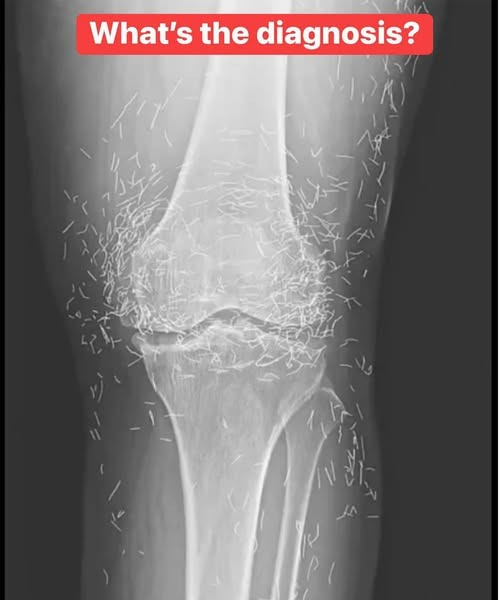🧠 The Real Story Behind the X-Ray
In 2018, South Korean doctors published a case study about a woman with advanced osteoarthritis who had received repeated gold acupuncture treatments over 30 years.
She had been receiving gold wire implants in her knees and lower back for chronic pain
The “needles” were actually microscopic gold threads, about 0.2 mm thick and 3–5 mm long
Over decades, she received dozens of implants — not “hundreds” in a single session
When her knee pain worsened, an X-ray revealed numerous tiny metallic specks — the remnants of long-term gold implantation.
✅ The image was surprising — but not shocking, once the full context was known.
💉 What Is Gold Acupuncture Therapy?
Home🩻 X-Ray Reveals Gold Acupuncture Needles in Woman’s Knees – What Really Happened
🩻 X-Ray Reveals Gold Acupuncture Needles in Woman’s Knees – What Really Happened
Also known as gold thread implantation (GTI), this technique involves inserting tiny gold threads into acupuncture points or painful joints.
Why Gold?
Gold is biocompatible — meaning it’s less likely to cause allergic reactions
It’s inert — doesn’t corrode or break down in the body
Some believe it stimulates collagen production and reduces inflammation
Where Is It Used?
Common in South Korea, China, and parts of Southeast Asia
Used for:
Osteoarthritis
Chronic back pain
Facial rejuvenation (in cosmetic acupuncture)
🔬 While some small studies suggest pain relief, large-scale clinical evidence is limited.
🔍 What Did the X-Ray Show?
The X-ray revealed:
Multiple radiopaque (light-blocking) dots in both knees and lower spine
No signs of infection or acute injury
Advanced osteoarthritis, as expected
Doctors concluded that the gold threads were not the cause of her pain — but rather a long-term treatment she had undergone.
There was no evidence of migration, infection, or serious complications — though long-term safety data is still limited.
